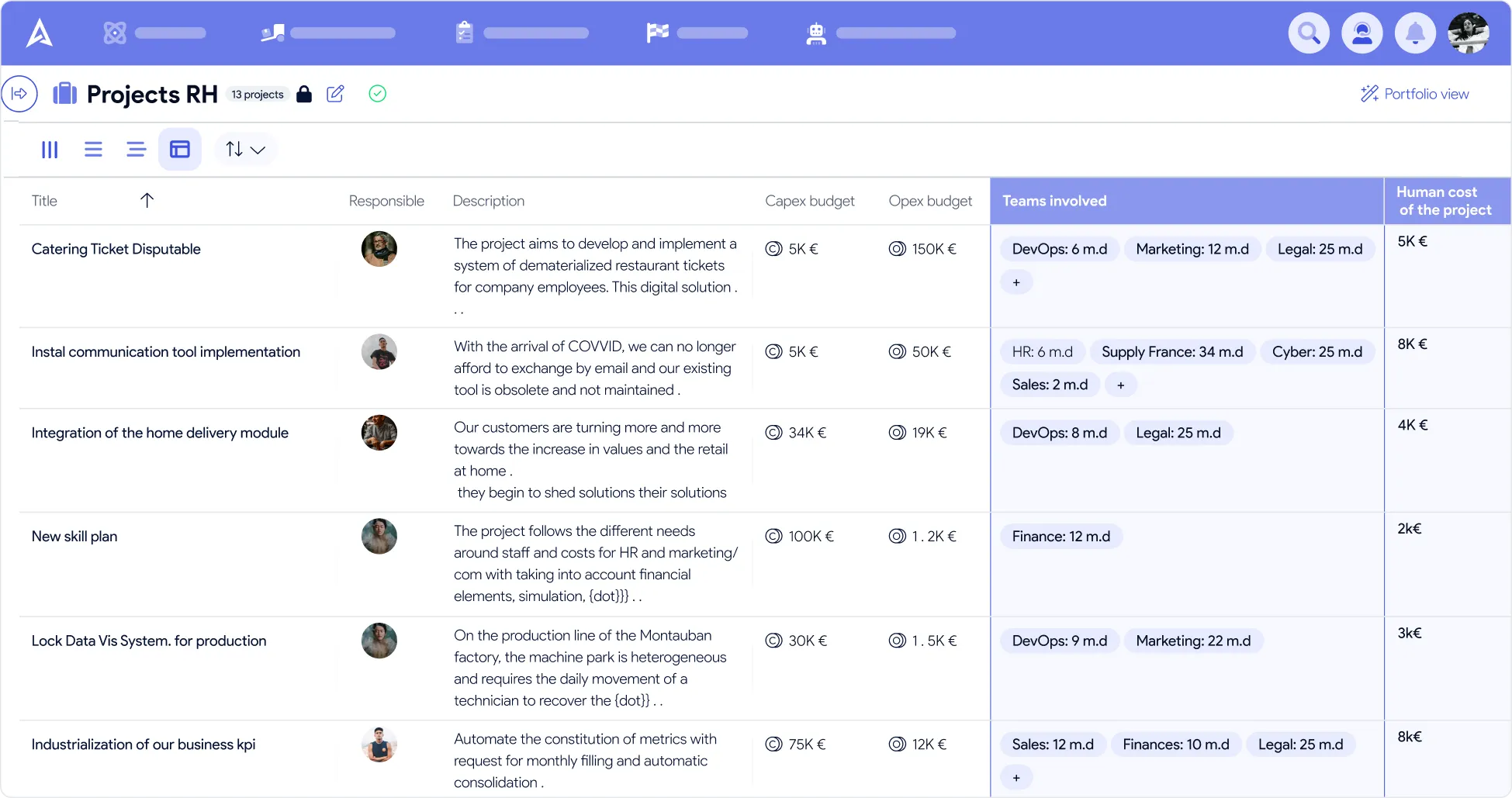Budget is like a GPS for portfolio projects. It enables you to stay on course, while avoiding any drift. It's also an indicator of how well projects are progressing. Keep an eye on it to better control spending!

Having a real-time snapshot is essential at every stage of the project, so you know where you stand. This makes it easy to track your budget and present it to your management in just a few clicks, directly from Airsaas.
For each project in the scoping phase, your project managers add several detailed expense lines, classified as CAPEX and OPEX, to anticipate costs and make the validation stage more objective.

Shine during your monthly meetings with the CFO! Thanks to the monitoring of expenses”“,”“and”“you will have all the answers to his questions:“,”“and”“you will have all the answers to his questions:
By tracking expenses “incurred”, “consumed” and “ paid out”, you can answer all your questions:
Because graphics matter, you can finally choose the project group you're interested in to switch to the budget view, and get a clearer picture thanks to the graphics. These consolidated views are easy to share with executive committee members during meetings.


The human cost is the largest expense item in budgets. Whether internal or external, let's not forget it. On Airsaas, fill in the teams' Average Daily Rate, and discover the human cost of your projects.
Monitoring project budgets is great - but to do so, you must be able to trust the “freshness” of the data provided. For each expense line, the date of the last update is visible. Airsaas also offers you a reliability indicator for reinforced control!


It's hard to foresee all the expenses you'll need when you create your budget during the scoping phase! If new expenses arise during the execution phase, don't worry. You can add them to those already planned for greater agility, while keeping track of what was validated during the scoping phase.
AirSaas adapts to all types of organization, making budget tracking even easier to understand! For each expense, your project managers can enter an analytical axis. You can then access consolidated graphs of project spending by axis, and discover the main cost items. If the analytical axes provided aren't sufficient, don't worry - you can add your own in just one click.

With AirSaas, it's easy to:
Let's discuss, and get a free AirSaas trial.
It's quite simple: if the project has no prioritization, it doesn't appear as a business priority on the roadmap. That helps :)
To be able to prioritize cross-organization, you need three things. First, each manager must prioritize his or her needs. Then you need a shared definition of what is vital to the organization. And lastly, you need an estimate of the time and potential gain for each project. This Airsaas feature takes care of the first point.